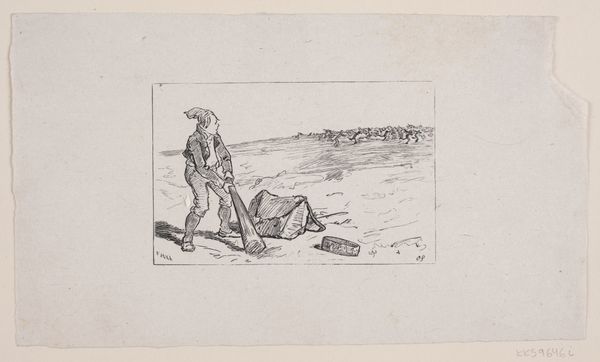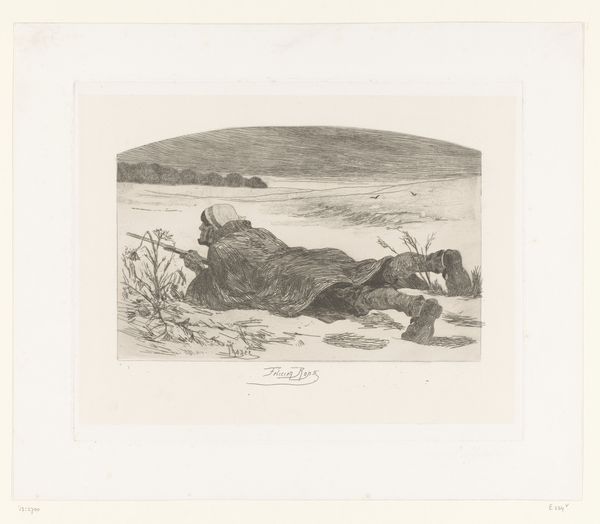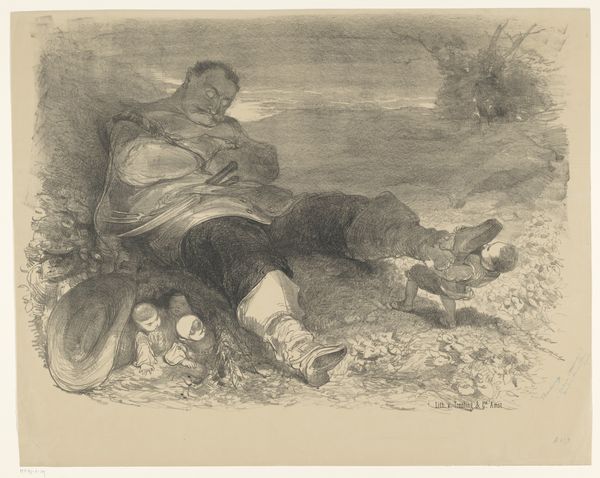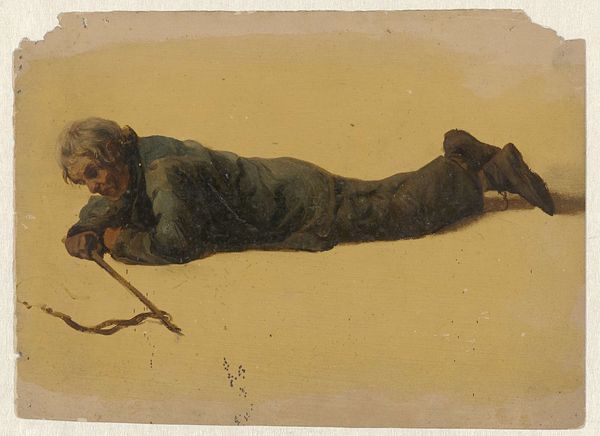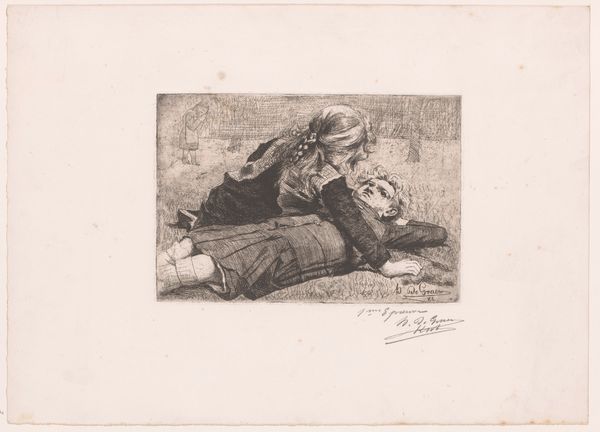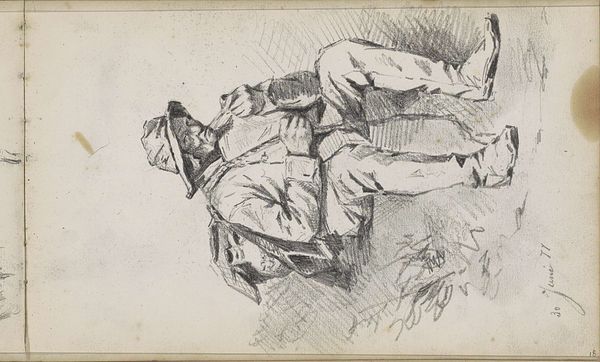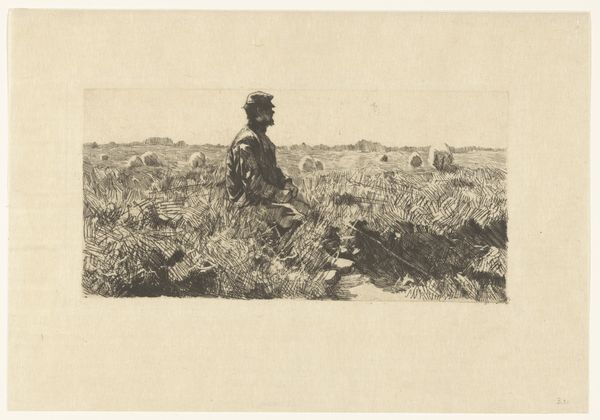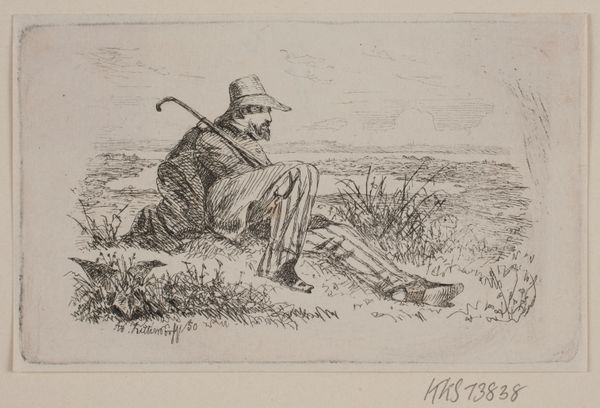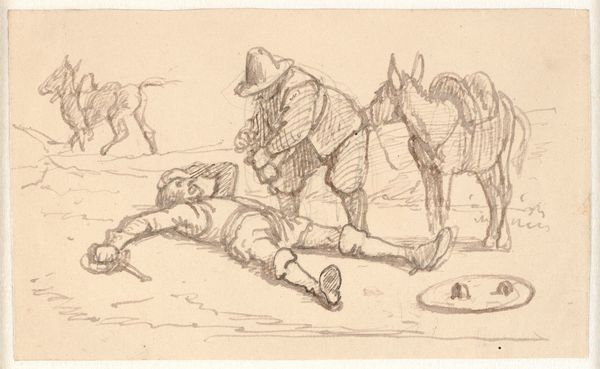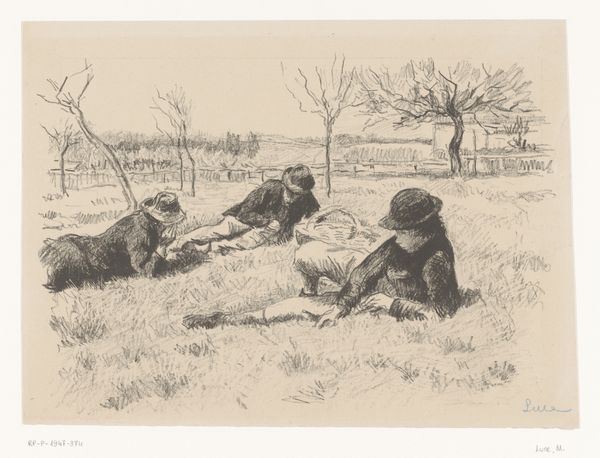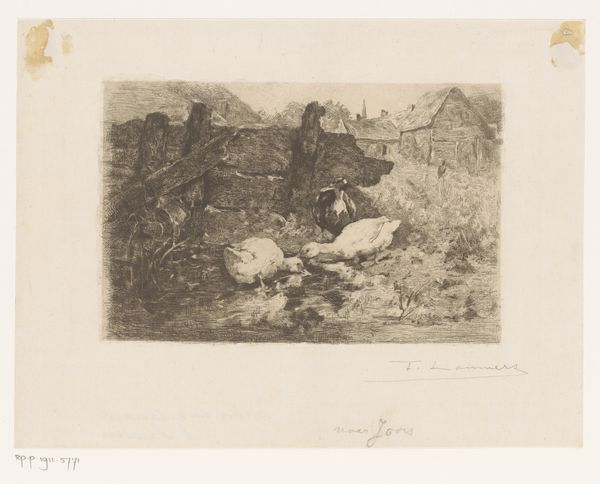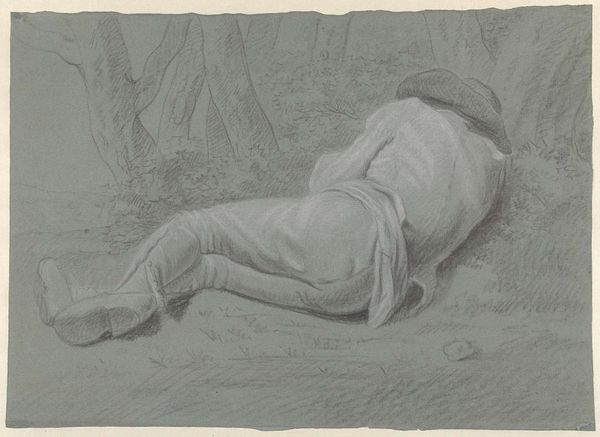
print, engraving
# print
#
landscape
#
united-states
#
genre-painting
#
engraving
#
realism
Dimensions: 4 3/8 x 8 11/16 in. (11.11 x 22.07 cm) (image)7 7/16 x 11 11/16 in. (18.89 x 29.69 cm) (sheet)
Copyright: Public Domain
Curator: This is William B. Closson's "Castles in the Air," an engraving dating from the 19th century, here at the Minneapolis Institute of Art. Editor: My initial impression is of weariness. There's a vulnerability to the boy’s posture, the casual sprawl juxtaposed with the industrial labor implied by his clothing. Curator: It's a striking example of realism in printmaking. The level of detail Closson achieved with engraving is quite impressive; look at the textures he creates – the sand, the fabric, even the wisps of hair. I wonder what tools he employed to get such results? Editor: Absolutely. The way his clothes appear worn speaks to the realities of child labor during that time, offering a critique of social conditions rather than merely aestheticizing poverty. What were the processes like for working children during the 19th century? The sea in the background and his prone, relaxed position, suggests that work may be taking place elsewhere. The contrast may be indicative of broader forces. Curator: You know, I was thinking about the engraving process itself—the meticulous work involved in creating the plate, the act of reproduction that allows for wider distribution. There’s a material and a political dimension here. Editor: I agree. Also, think about the seashells surrounding him. What do they represent in contrast to his clear need and tiredness? Does he perhaps play at the beach while he should be laboring? Curator: It might suggest he’s briefly free of imposed, mandatory, obligations... We can look at his shoes just off his feet, perhaps for a break... Editor: Yes, there’s a real ambivalence in the image, that's definitely right, pointing to both oppression and fleeting moments of solace. Curator: Indeed, the medium is also relevant. Was printmaking a mode of resistance, a way to disseminate images of marginalized figures? Editor: It certainly allowed for a wider circulation of narratives that challenged the status quo. Considering how it speaks to ongoing concerns about social justice and economic disparity... Curator: Looking at the artwork's themes in the context of the present day...it certainly invites reflection... Editor: It's really unsettling, in a way, because the image offers not just artistic observation, but social commentary as well. The work really serves as a starting point for crucial dialogues about history and its resonances.
Comments
No comments
Be the first to comment and join the conversation on the ultimate creative platform.
